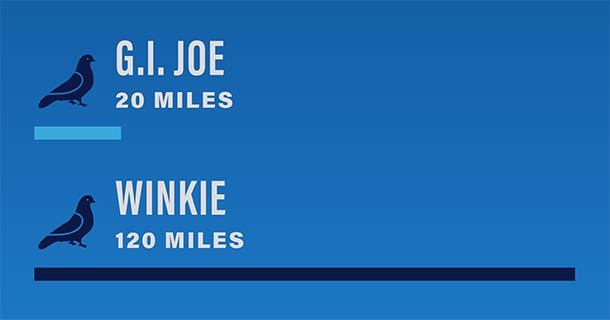Modern warfare relies on high-tech systems—satellites, encrypted radios, GPS. But in earlier times, communication looked very different. During World War II, some of the most vital military messages weren’t delivered by machines at all.
They were delivered by birds.
Specifically, carrier pigeons in WWII played a crucial role in keeping troops connected. These unlikely messengers helped shape military communication in WWII, and their service saved thousands of lives. Today, their legacy lives on as we remember their service.
Let’s take flight into one of WWII’s most fascinating chapters—and explore why these feathered heroes still matter today.
Pigeons in WWII: Risks of Battlefield Silence
In the everyday chaos of the war, silence is dangerous. Communication breakdowns can isolate units, delay reinforcements, or cost lives. Harsh weather, mountainous terrain, and equipment failure make consistent contact a constant challenge.
This is where carrier pigeons proved invaluable for communication delivery in WWII. They didn’t rely on fragile wires or limited-range radios. They didn’t jam, short-circuit, or require power. Instead, they cut through the silence—quite literally—with wings.
Why Carrier Pigeons Were Used in WWII
During WWII, over 250,000 pigeons were deployed by Allied forces. These birds—often referred to as WWII pigeon messengers—were trained to return home with messages attached to their legs in tiny capsules.
They were used across the Army, Navy, Air Force, and resistance networks. In high-risk missions where radio silence was critical or equipment had failed, pigeons became the most reliable—and sometimes only—method of communication.
What made pigeons ideal for wartime messaging?
- Speed: They could fly 50 to 60 miles per hour.
- Endurance: Some birds traveled over 100 miles in one trip.
- Stealth: They were silent and untraceable.
- Reliability: Many pigeons had a return rate of over 90%.
These birds didn’t just deliver paper—they delivered hope, survival, and strategy.
How Pigeons Were Trained for War
Training pigeons for combat wasn’t as simple as releasing them into the sky. The birds underwent months of careful preparation by military handlers known as pigeon trainers or “loftmen”. These specialists taught birds to identify their home loft from long distances.
Training involved:
- Gradual distance increases: Birds were taken further from their home each day to learn longer routes.
- Controlled releases: Practice flights helped pigeons learn to navigate under different conditions.
- Noise exposure: To prepare them for battle, pigeons were acclimated to gunfire and aircraft noise.
Each pigeon was also carefully cataloged, assigned a service number, and tracked by mission logs.
Many of these birds were stationed with front-line units or aircrews, carried in small baskets or cages, and released when communication lines were down. Despite the danger, they returned with messages that altered battle outcomes.
How Did Pigeons Help in WWII?
In places where radios were too bulky, intercepted, or damaged, pigeons provided a dependable alternative. The use of pigeons helped shape military communication in WWII, offering a low-tech solution with high impact.
Carrier pigeons were used to:
- Relay enemy positions and troop movements
- Report on battlefield updates
- Deliver coordinates for airstrikes
- Transmit weather information
- Signal mission success or distress
Heroic Pigeons Who Changed the Course of War
Some pigeons became legends in their own right.
G.I. Joe
This American pigeon flew 20 miles in 20 minutes to deliver a message that stopped a planned bombing of an Italian village—just in time to save over 1,000 Allied soldiers. For his bravery, he received the Dickin Medal, the animal version of the Victoria Cross.
Winkie
After a British bomber crashed into the sea, Winkie flew over 120 miles back to base, helping rescuers locate the downed crew. She, too, received a medal and became a national hero.
These unsung heroes of WWII never hesitated, even when flying through gunfire, poor weather, or long distances. Their courage continues to inspire.

Lessons from the Coop: What Military Families Can Take Away
What can modern military families learn from these feathered veterans? At first glance, maybe not much. But look closer, and you’ll see a message that’s still relevant today: preparation matters.
Those who trained and carried pigeons weren’t just improvising. They were building backup systems, creating options, and thinking two steps ahead. That mindset is what many military families still live by today.
At the Uniformed Services Benefit Association® (USBA®), we honor that same spirit by offering flexible life insurance options designed for real life. Whether you’re active duty, transitioning, or preparing for the unexpected, life insurance from USBA helps you protect what matters, just as those messengers did 80 years ago.
If you’d like to learn more about how you can protect your family today, then contact one of our product specialists at 800-368-7021.
Final Thoughts: Remembering the Winged Warriors
The story of carrier pigeons in WWII is more than a footnote. It’s a tribute to courage, ingenuity, and the unexpected ways lives are saved in war.
These birds flew through storms, bullets, and darkness to bring messages that turned the tide of history. Their service reminds us that even the smallest players can make the biggest difference.
We honor their place in military communication history—and the countless ways our armed forces adapt, overcome, and endure.
Photo source: Men of the Army’s 21st Signal Loft release pigeons during the war on March 1943. National Archives